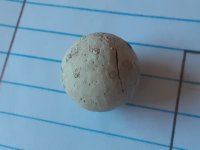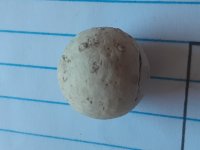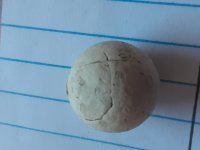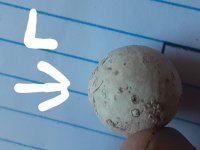Umbrahabitator
Jr. Member
Hello, I hope I found a musket ball, it looks like one and sure feels like lead. If how I found it is any indication, then this may help. I dug about 4-6 inches deep and found a large rock, the musket ball was under the rock. I measured it and it came out to be around 16-17 mm in diameter, I don't have calipers so the measurements are not the best. However, I found this website and did the calculation "Diameter in inches = 0.223304 x (Weight in grams) to the power of 1/3" and got .635047
.223304 x 23 grams ^ (1/3) = .635047
I notice the little lump (labeled with an "L") where the metal would be poured and an off-center seam line as described in the article.
Thank you all for your help and wisdom, it is great knowing there are people to help in this grand adventure




.223304 x 23 grams ^ (1/3) = .635047
I notice the little lump (labeled with an "L") where the metal would be poured and an off-center seam line as described in the article.
Thank you all for your help and wisdom, it is great knowing there are people to help in this grand adventure










